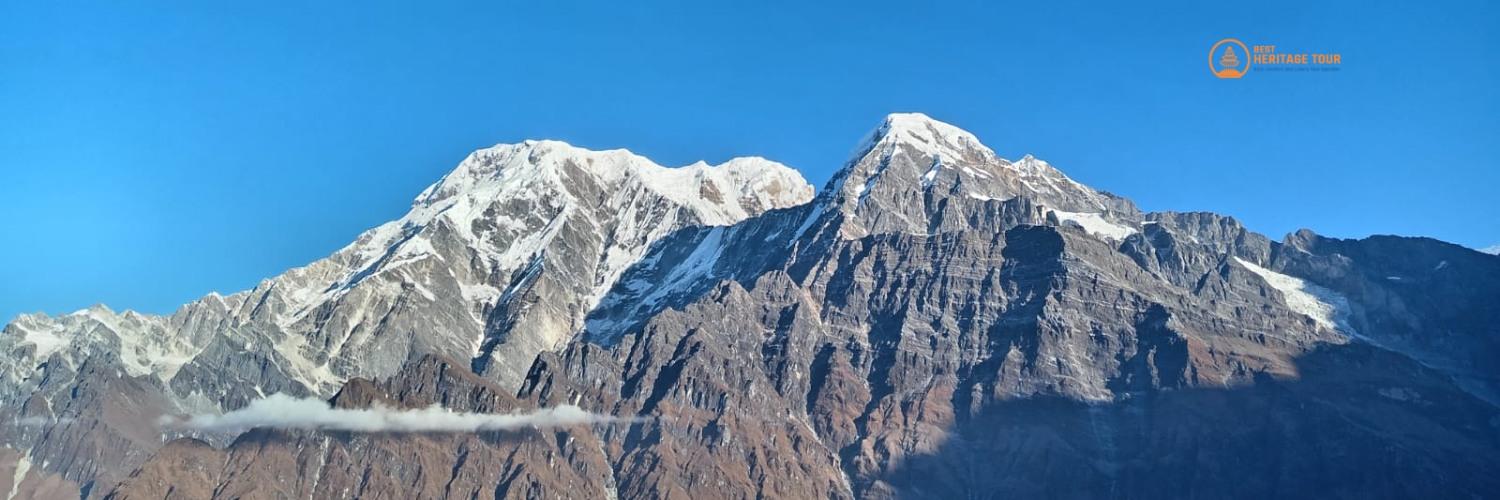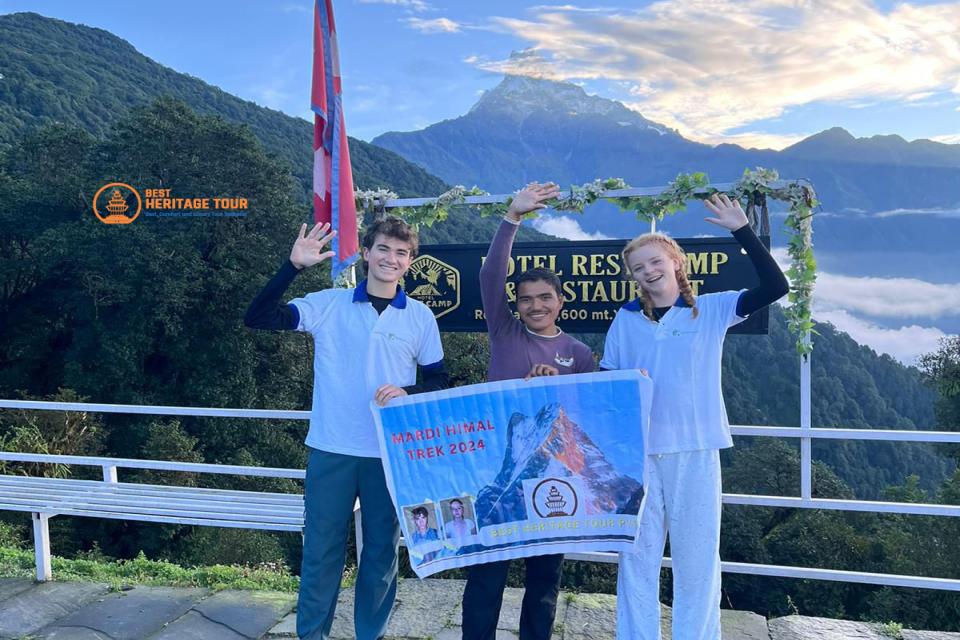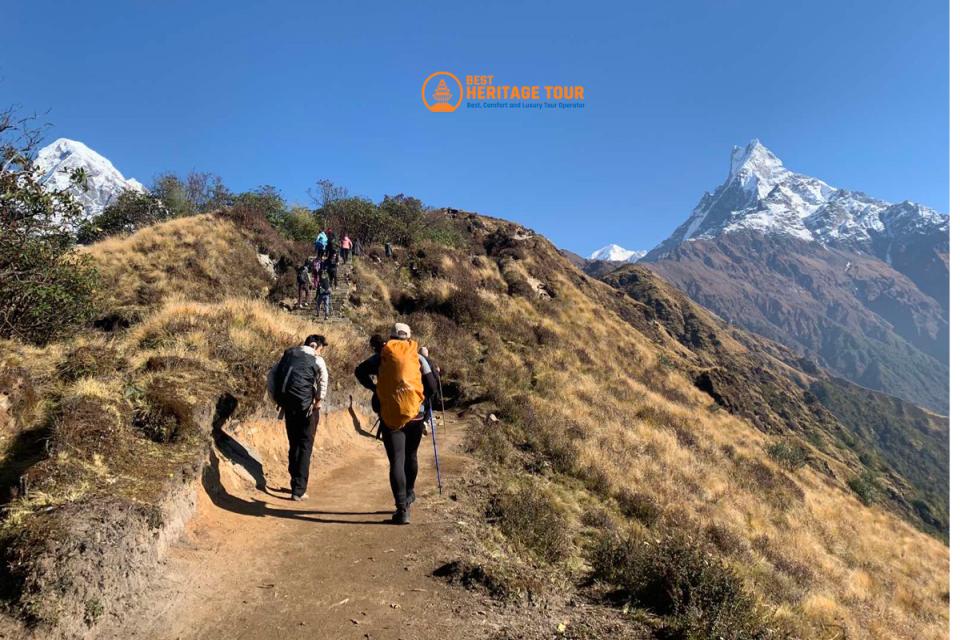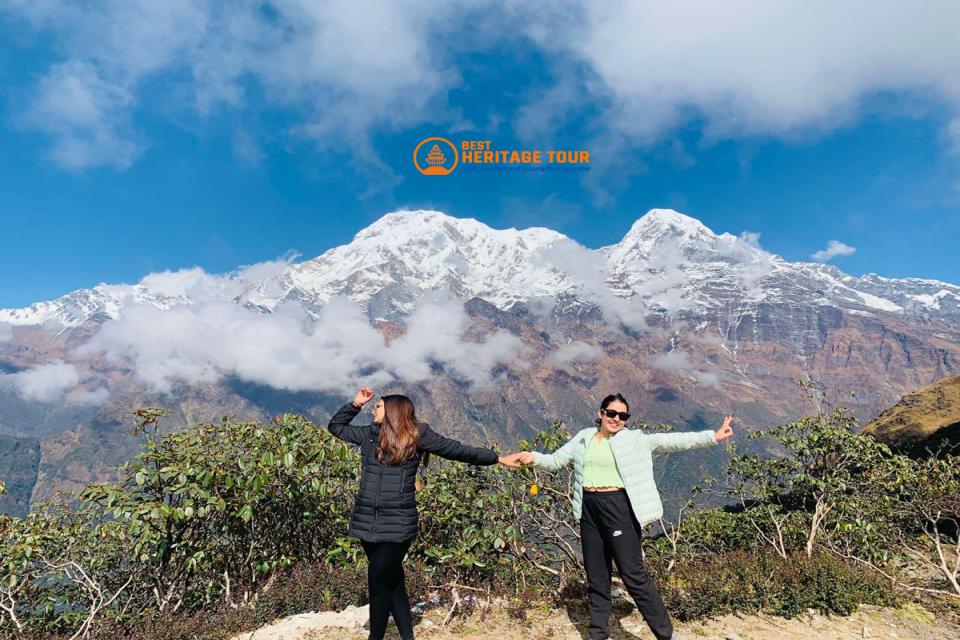Nepal, home to the world’s tallest peaks and some of the most breathtaking trekking routes, offers a unique adventure at every turn. Among its many trails, the Mardi Himal Trek stands out as a less-crowded yet spectacular journey through lush forests, alpine meadows, and panoramic Himalayan vistas. For trekkers, November is considered one of the best months to embark on this trek, offering crisp air, clear skies, and unforgettable mountain scenery.
This guide provides a detailed overview of Mardi Himal Trek weather in November, what to expect on the trail, how to prepare, and why choosing Best Heritage Tour ensures a safe and memorable experience.
Why November is the Ideal Month for the Mardi Himal Trek
The autumn season in Nepal, spanning September to November, is widely regarded as the most favorable trekking period. November, in particular, brings several advantages for those heading to the Himalayas:
-
Stable weather and clear skies: After the monsoon rains, the skies open up, offering unparalleled visibility of peaks like Machhapuchhre (Fishtail), Hiunchuli, and Mardi Himal itself. Trekkers can enjoy uninterrupted mountain panoramas and breathtaking sunrise and sunset views.
-
Comfortable daytime temperatures: Unlike the sweltering summer months or the freezing winters, November provides moderate temperatures along the lower and mid-altitude trekking zones. This makes hiking more enjoyable and less exhausting.
-
Dry trails: With minimal rainfall, trekking paths remain dry and firm, reducing the risk of slips and muddy terrain. It is particularly important on trails that pass through forests and narrow ridges.
-
Less humidity and reduced cloud cover: The crisp mountain air enhances visibility and provides a refreshing trekking environment, perfect for photography and outdoor adventure.
-
Ideal for acclimatization: The combination of clear weather and moderate temperatures helps trekkers gradually adapt to higher elevations without extreme weather disruptions.
In short, November offers the perfect window to experience the Mardi Himal Trek in all its natural glory, from lush rhododendron forests to the snow-capped grandeur of the Annapurna range.
Mardi Himal Trek Overview
The Mardi Himal Trek is often referred to as a hidden gem of the Annapurna region. While it shares some trails with the popular Annapurna Base Camp Trek, Mardi Himal is quieter, providing a more intimate trekking experience.
-
Trailhead: The trek starts near Pokhara, around 800 meters above sea level.
-
Highest point: Mardi Himal Base Camp sits at approximately 4,500 meters.
-
Duration: Typically, 6-8 days depending on pace and acclimatization needs.
-
Terrain: A mix of forest paths, terraced villages, steep ascents, and alpine meadows.
Understanding the trail is crucial because weather conditions vary significantly across elevations. In November, careful preparation ensures you can enjoy every section of the trek safely.
Detailed Weather Guide by Elevation
Weather on the Mardi Himal Trek changes noticeably with altitude. Here’s a breakdown for November:
1. Lower Elevations (Pokhara to Dhampus/Pothana, 800-2,500 m)
-
Daytime temperatures: 10°C to 15°C (50-59°F)
-
Nighttime temperatures: 2°C to 8°C (36-46°F)
-
Conditions: Mild, dry, and comfortable for trekking. Forested trails are clear, and early morning fog lifts quickly.
Trekkers at this altitude will find the trail manageable without extreme cold gear, though a light fleece is recommended for mornings and evenings. Clear skies offer early glimpses of the Annapurna peaks, motivating trekkers to begin the journey.
2. Mid-Altitude (Forest Camp to Low Camp, 2,500-3,000 m)
-
Daytime temperatures: 5°C to 15°C (41-59°F)
-
Nighttime temperatures: 0°C to 5°C (32-41°F)
-
Conditions: Cooler, crisp air. Forested sections give way to open ridges and meadows. Trails are dry and easier to navigate.
This elevation requires layering to adjust for temperature fluctuations. Warm gloves, a hat, and a mid-layer fleece are recommended for comfort during stops or early mornings.
3. High Camp & Base Camp (3,800-4,500 m)
-
Daytime temperatures: 0°C to 10°C (32-50°F)
-
Nighttime temperatures: -5°C to -10°C (23-14°F)
-
Conditions: Alpine and exposed, potentially windy. Snow is possible at Base Camp in late November.
Trekkers must be prepared with proper cold-weather gear, including insulated jackets, thermal base layers, and a high-quality sleeping bag for overnight stays. The higher elevations also bring thinner air, requiring careful pacing and acclimatization.
Weather Summary Table
|
Elevation Zone |
Daytime Temp |
Nighttime Temp |
Conditions |
|---|---|---|---|
|
800-2,500 m |
10-15°C |
2-8°C |
Dry, mild, forest trails |
|
2,500-3,000 m |
5-15°C |
0-5°C |
Crisp air, alpine meadows |
|
3,800-4,500 m |
0-10°C |
-5-10°C |
Cold nights, possible snow |
How Weather Affects Your Trekking Experience
Weather impacts not just comfort but also safety and the overall trekking experience. Key considerations:
-
Visibility and Photography: November provides unmatched clarity. The Annapurna range, Mardi Himal, and Machhapuchhre peaks appear in all their glory, perfect for photography enthusiasts.
-
Trail Conditions: Dry weather reduces muddy or slippery sections, making it easier to navigate forest paths and rocky ridges safely.
-
Acclimatization: Cooler temperatures at higher altitudes can be taxing. Gradual ascents and proper rest days are crucial to avoid altitude sickness.
-
Nighttime Comfort: High-altitude nights are cold. A warm sleeping bag and insulated clothing ensure restful sleep, crucial for trekking performance.
-
Safety: Even in November, weather can change suddenly in the mountains. Winds, frost, or light snow at Base Camp require proper gear and guidance.
Packing and Gear Recommendations for November
Proper gear ensures safety, comfort, and enjoyment. Here’s a detailed packing guide:
Clothing
-
Thermal base layers (top and bottom)
-
Fleece or soft-shell mid-layer
-
Insulated down jacket
-
Waterproof and windproof outer layer
-
Trekking pants and warm leggings
-
Warm gloves, wool hat, and neck gaiter/buff
-
Trekking socks (carry spares)
-
Sunglasses with UV protection
-
Sunhat for lower altitudes
Footwear & Accessories
-
Sturdy trekking boots with good grip
-
Gaiters for light snow or dust
-
Headlamp with extra batteries
-
Power bank for electronics
-
Water purification tablets or filter
-
Sunscreen and lip balm
-
Basic first-aid kit
Overnight & High-Altitude Gear
-
Sleeping bag rated -10°C or lower
-
Lightweight down jacket for teahouse use
-
Trekking poles for steep sections
-
Backpack rain cover
-
Dry bags for documents and electronics
Documents
-
ACAP permit and TIMS card
-
Travel insurance covering high-altitude trekking
-
Copies of ID and emergency contacts
Daily Trekking Tips for November
-
Start early: Utilize daylight hours and calmer morning weather.
-
Ascend cautiously: Avoid high winds or sudden snow in exposed areas.
-
Hydrate well: Cold air may reduce thirst sensation, but hydration is essential.
-
Layer appropriately: Remove or add layers according to activity and altitude.
-
Enjoy the views: Clear skies in November provide memorable sunrise and sunset vistas.
-
Acclimatize: Rest adequately after reaching high points like High Camp.
Sample 7-Day Mardi Himal Itinerary for November
|
Day |
Route |
Elevation |
Notes on Weather and Trekking |
|---|---|---|---|
|
1 |
Kathmandu → Pokhara |
820 m → 820 m |
Mild weather, scenic drive along Prithvi Highway; perfect for acclimatization. |
|
2 |
Pokhara → Dhampus → Deurali |
1,640 m → 2,100 m |
Crisp mountain air, clear skies; moderate hike through rhododendron forests. |
|
3 |
Deurali → Forest Camp |
2,100 m → 2,600 m |
Pleasant daytime temperatures, dry trail; excellent for acclimatization. |
|
4 |
Forest Camp → High Camp |
2,600 m → 3,600 m |
Cooler temperatures, panoramic Himalayan views; warm layers recommended for evenings. |
|
5 |
High Camp → Mardi Himal Base Camp → Low Camp |
3,600 m → 4,500 m → 3,050 m |
Clear skies at Base Camp, freezing nights; spectacular sunrise and mountain vistas. |
|
6 |
Low Camp → Jhinu Danda |
3,050 m → 1,780 m |
Warmer temperatures, gentle descent; enjoy hot springs at Jhinu Danda. |
|
7 |
Jhinu Danda → Landruk → Siwa/Ghandruk Phedi → Pokhara |
1,780 m → 1,150 m → Pokhara |
Easy descent, mild weather, scenic villages along the way; relaxing end to trek. |
Best Heritage Tour ensures teahouse reservations, porter support, and guide services for a smooth trek.
Advantages of Trekking Mardi Himal in November with Best Heritage Tour
-
Weather-Optimized Itinerary: Enjoy the clear skies and ideal trekking conditions of November.
-
Comfortable Teahouse Stays: Pre-booked accommodations ensure restful nights at every stop.
-
Expert Support: Guides and porters provide safety, local knowledge, and trail assistance.
-
Less Crowded Trails: Despite peak season, Mardi Himal remains quieter than major treks.
-
Beginner-Friendly: Moderate weather makes the trek accessible for both beginners and experienced hikers.
-
Photography Opportunities: Clear November skies create perfect conditions for capturing Himalayan vistas.
Conclusion: Book Your Mardi Himal Trek November
November offers the perfect combination of stunning scenery, stable weather, and crisp mountain air for the Mardi Himal Trek. Whether you are an experienced trekker or a beginner seeking adventure, this period guarantees an unforgettable experience.
With expert guides, porter support, and a weather-optimized itinerary, Best Heritage Tour ensures your Mardi Himal Trek is safe, enjoyable, and unforgettable. Prepare your gear, embrace the Himalayan adventure, and make November a trekking experience of a lifetime!
Secure your trekking adventure with Best Heritage Tour today:
Phone / WhatsApp / Viber: +977-9851149197 / +977-9810043046
Email: info@bestheritagetour.com / bestheritagetour@gmail.com
Website: www.bestheritagetour.com
Office: Thamel Marg, Kathmandu, Nepal
Author: Best Heritage Tour
Date: 31st October, 2025





